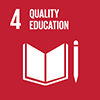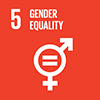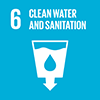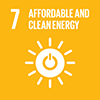June 2022 - You are accessing an old version of our website. The SDGs Voluntary Commitments have been migrated here: https://sdgs.un.org/partnerships
You will be redirected to the new Partnership Platform in 10 seconds.
June 2022 - You are accessing an old version of our website. The SDGs Voluntary Commitments have been migrated here: https://sdgs.un.org/partnerships
You will be redirected to the new Partnership Platform in 10 seconds.
Evidence Based, Low Carbon, Pro-Poor Advocacy on Sustainable Eco-Village Development in Bangladesh, India, Nepal. Sri Lanka in 2015-18. The Project partners tested/demonstrated the concept in 3 villages in the respective countries, and published training manuals, case studies, CO2 mitigation calculation, policy briefs, videos for promote replications, and inclusion the approach in development plans and national guidelines.
The background is that 1.56 billion people in South Asia struggle for access to energy, sanitation, safe drinking water, nutrition, and health services (UNDP, 2014). Climate change makes the situation worse, as by the 2050s it could decrease the cultivation area substantially.
Eco-Village Development concept is an effective response to the SDGs /2030 Agenda as a participatory planning of basket of pro-poor local climate solutions in South Asia: Bangladesh, India, Nepal. Sri Lanka.
The Concept is a bottom-up, integrated development approach, which empower communities by engaging them actively in the development and decision making through a participatory planning process. The concept offers a basket of solutions, which are achieving many of the SDGs. poverty (1), food (2), healthy life (3) life long learning (4) gender (5), water (6), energy (7), sustainable production (12) climate (13), forest/desertification (15), peaceful inclusive society (16.7).
The basket of solutions includes: Improved cookstoves with chimney/ chimney hood and household biogas for cooking, rainwater harvesting, solar vegetable/fruit drying, greenhouse, organic vegetable farming, composting, high values tree plantation; solar powered home systems for lighting, improved water mill for grinding and powering electricity for the community, hydraulic ram pump, biomass waste for rural brick production, solar powered water pump, and electricity for a school; solar powered street light, fish ponds, small hybrid solar-wind turbine powering a hospital. Most solutions are low-cost, and some are very innovative using local materials, e.g., bamboo.
The Project partners tested/demonstrated the concept in 3 villages in the respective countries and several publications, manuals where it is described in details with examples from each countries.
Examples for connection to SDGs:
- Improved cook stoves with chimney/chimneyhood / biogas for cooking leads to: Less fuels wood used (climate mitigation (13)); reduction of used of wood from the forest (decrease deforestation). Smokeless kitchen (clean energy (7); healthier environment in the kitchen (3)). Besides less time used for women and children to collect firewood; less money is used to buy firewood (poverty (1)).
- Solar water pump provides clean water (water (6), climate (13)),
- Rainwater harvesting used for agriculture (water (7), climate (13), food (2))
- Composting, greenhouse, organic gardening, fishpond (food (2), climate adaptation (13), poverty (1), sust. production patterns (12))
- Water mill for grinding and electricity (energy (7), climate mitigation (13), food (2), poverty (1)
- Solar powered street light, solar home system for lighting (energy (7), climate (13), poverty (1)), healthy life (3)
- planning process with participation of the villagers, with focus on women’s participation (peaceful inclusive society (16), women (5))
- Participatory planning process workshops with mapping resources, problems and opportunities is a lifelong learning opportunities for all, published Training Manual with resource list. (4)
The beneficiaries: 3-6 villages in 4 countries. The implementing partners were: CRT/N Center for Rural Technology (Nepal), INSEDA Integrated Sustainable Energy and Ecological Development Association (India), Grameen Shakti (Bangladesh); IDEA Integrated Development Association (Sri Lanka). The project coordinator was DIB, Danish International Human Settlement Service. The international outreach: INFORSE - International Network for Sustainable Energy. Regional outreach: CANSA and INFORSE-South Asia hosted by INSEDA, India. The Project financed by CISU/ Danida. Statements on "what the villagers want?" and series of case studies, success stories, planning matrices, videos showing the stakeholders perspectives.
The Eco-Village Development concept is an integrated concept based on participatory village planning processes engaging the whole community and ensuring equal participation of women and men.
It is very important to ensure participation of the villagers, especially there is focus on women’s participation as major stakeholders as they are the one who are cooking, collecting firewood, and work in the agriculture, and often are not participating in the decision making. It is an NGO initiative, and mostly it was also successfully cooperated with local governmental planners.
The participatory village planning is a collaborative approach including social mapping, resource mapping, historical timeline and participatory technology development, which involves open and detailed discussions on problems and solutions with feedbacks.
Climate mitigation, climate adaptation; clean energy & environmental health impacts:
The initiative reduces emission reduction by accessing renewable energy and by adopting sustainable agricultural practices. Thus it has climate mitigation components. It also assists communities to adapt to changing climate in the long run by providing alternative income sources and building capacity. The adaptation co-benefits extend to health because of access to clean energy and water sources.
The Project developed and published a White Paper on quantifying the climate mitigation (CO2/CO2e) reduction of the different solutions as well as reviewed the adaptation effects of each solutions. (improved cookstove, household biogas plants, solar lighting, solar or hydro micro- and minigrids, solar dryers). The publication is a very useful for decision makers bridging a gap on the area. While each solution has small mitigation effect, many of them have substantial effect. (1.56 billion people in South Asia struggle for access to energy, sanitation, safe drinking water, nutrition, and health services).
Reduce poverty by improve livelihood and income generation:
- Income generation: solar dryer for food preservation and income generation with selling the dried food on the market; water mills to grinding and community electricity for light and machines.
- Improved livelihood: smokeless kitchen, clean water pumped by a solar powered pump, use of rainwater collected on the roof, fishpond, solar powered electric light in homes and street light.
Social: Engagement of community, empowerment of women.
Participatory Planning process is a learning process. It is difficult to quantify. It can be shown how many people participated from the villagers, women/Men participation ratio, the resulted social/resource maps, and village plans.
The target group included Poor people living in rural areas. They are vulnerable as poor, and young people (especially men) move/commute to cities to find work. They are in the risk group of possible future migrants to slums of the cities.
As well as poor people who could get out of poverty with micro loans, self help groups financed solutions, municipal planed village development.
The participatory planning process engaging the whole community brings awareness of problems, and possible solutions.
- Awareness of possibilities for better lively hood (smokeless kitchen, light in house or in the street, clean water, grinder, preserved food etc )
- Awareness of possibilities for income generation activity which can be done at home/garden or as a household business and availability of learning through a “how to do” course. (organic gardening, composting, solar fruit drying, high value plantation, mushroom growing, sweet making with improved cookstoves, building improved cookstoves)
- Awareness and facilitation to financing possibilities through municipal development plan, micro loan, self help groups, and contribution of own work (building bamboo structures for solar dryers, compost basket, rainwater harvest tank, greenhouse)
The Project partners built up substantial capacity to be trainers of trainers, and developed and published several publication towards that it can be replicated:
1.0 A general introduction publication including background, “dream village” statements on What the villagers want, local success stories, overview of technical solutions, cases etc. In English, and national languages (Nepali, Bangla, Sinhala, Hindi) to increase the outreach to the rural local level.
2.0 A White Paper quantifying the climate mitigation (CO2/CO2e) reduction of the different solutions as well as highlight the adaptation effects of each solutions for policy makers. (English)
3.0 Training of Trainers manual on participatory planning and the technological solutions illustrated with pictures and short case stories. In English, and national languages (Nepali, Bangla, Sinhala, Hindi) to increase the outreach to the rural local level.
5.0 Short documentary videos from each country.
6.0 UNFCCC Policy briefs, and Input to the Talanoa Dialogue.
The eco-village development concept is an integrated bottom-up development concepts, which brings solutions to climate mitigation, adaptation and resilience and water energy and food security as well as reduce poverty, and through a participatory planning empower community and women.
Participatory planning process is the best way for rural sustainable development, which empowers communities, and gives ownership to the development. Sustainable technologies (incl. low cost ) and innovations are available. There is big potential for learn from each other and for technology transfer within the region as well as in the south-south. Awareness of problems and possible technical solutions need financing, which is a challenge. The way forward is including the participatory approach and the technologies into local development plans, national guidelines (NDCs, SDGs) as well as guidelines of international agencies.
The Project partners built up substantial capacity to be trainers of trainers, and developed and published several publications towards that it can be replicated and bring inspirations to many.
The publications include: proposals and training manual incl. case studies (in English, Nepali, Bangla, Sinhala, Hindi), as well as White Paper on quantification of CO2 reductions, UNFCCC policy briefs, posters, and videos.
Project web sites:
INFORSE-South Asia EVD: http://www.inforse.org/asia/EVD.htm and
http://ecovillagedevelopment.net/
Publications:
Eco-Village Development as Climate Solution: Proposals from South Asia Contents and pdf in English, Nepali, Bangla, Sinhala, Hindi (60 pp): http://www.inforse.org/asia/Pub_EcoVillageDev_SouthAsia.htm
Socio-Technical Manual for Training of Trainers (ToT) Manual on Participatory Planning, Technology and Knowledge Transfer of Eco-Village Development (EVD) in India, Nepal, Sri Lanka and Bangladesh (130 pp): http://www.inforse.org/asia/Pub_EcoVillageDev_TOT_Manual_SouthAsia.htm
White Paper on Mitigation and Adaptation with Eco-Village Development (EVD) Solutions (45 pp).
www.inforse.org/doc/Pub_EVD_White_Paper_Climate_Mitigation_Adaptation_2018.pdf
Talanoa Dialogue of UNFCCC: Story from Villages in South Asia (1 page):
http://www.inforse.org/doc/SB48_INFORSE_Talanoa_story_Bonn_May_6_2018.pdf
Videos:
Eco-Village Development in India – Documentary (12 minute) Link: https://youtu.be/rBWZQf2y5Mo
• Eco-Village Development in Nepal – Documentary (12 m) https://youtu.be/WlTm378jG7w
• Eco-Village Development: Sri Lankan Rural Livelihoods and Improved Biomass Stoves (8 m) Link: https://youtu.be/XrJHEyvhHc8
• Rural Kitchen Improvements. Eco-Village Development in Sri Lanka 3m) Link: https://youtu.be/TnkL2ZXgdto
• Organic Mushroom cultivation as a Rural Livelihood. Eco-Village Development in Sri Lanka (4m) Link: https://youtu.be/o0AYVI-n9PM
Articles in Sustainable Energy News 3-4 page articles in Nr :77, 78, 79, 80, 81, 82.
http://www.inforse.org/s_e_news.php3
UNFCCC Side event proceedings and Policy briefs: at SB48, COP23, SB46, SB44, COP21
http://www.inforse.org/INFORSE-UN.php3 and http://www.inforse.org/asia/INFORSE_Asia%20UN.htm
Other case stories in national languages, and event proceedings, posters and flyers
Download most publications from: http://www.inforse.org/asia/EVD.htm
Partners websites:
• Integrated Sustainable Energy and Ecological Development Association - INSEDA, India www.inseda.org
• Integrated Development Association - IDEA, Sri Lanka www.ideasrilanka.org
• Grameen Shakti, Bangladesh www.gshakti.org
• Centre for Rural Technology – CRT/N, Nepal www.crtnepal.org
• Climate Action Network South Asia – CANSA www.cansouthasia.net
• INFORSE-South Asia www.inforse.org/asia
• DIB, Project coordinator, Denmark www.dib.dk/sydasien
• International Network for Sustainable Energy – INFORSE www.inforse.org










 Start: 01 January, 2015
Start: 01 January, 2015 Completion: 31 October, 2018
Completion: 31 October, 2018